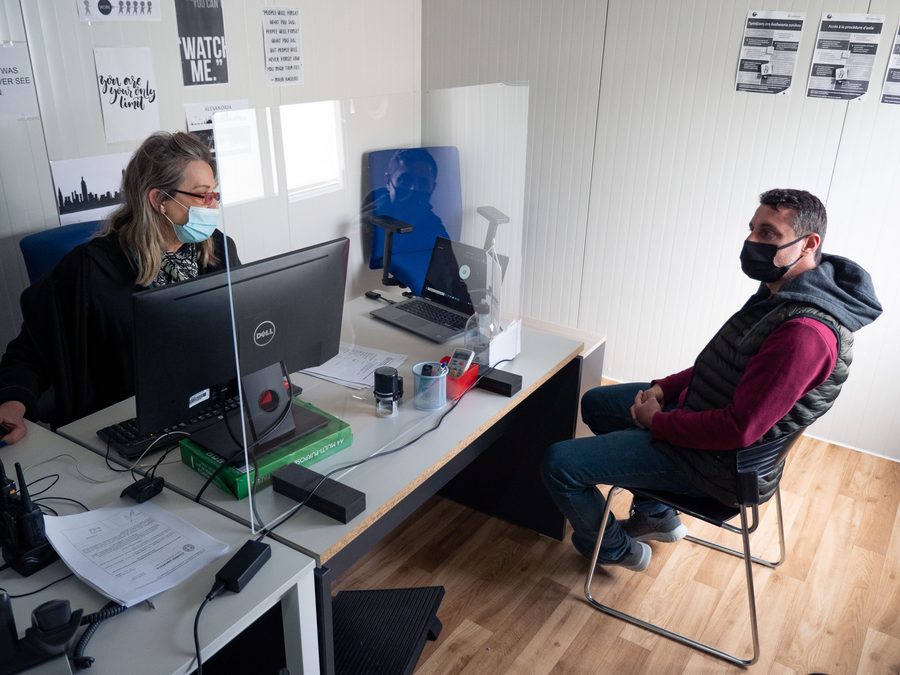News
Press Release Published: 9 November 2022
Latest EU asylum trends signal increased strains on national systems

In August, asylum applications in the EU+ reached a new high since 2015/2016. This reflected more applications lodged by a range of nationalities, but especially by Afghans and Syrians, many of whom use the Western Balkans route. At the same time, efforts continue to manage the arrivals of persons displaced by the Russian invasion of Ukraine and prepare for the winter.
After EU+ countries received unusually high numbers of asylum applications between May and July, this trend has accelerated. Analysis released by the European Union Agency for Asylum (EUAA) shows that about 84 500 asylum applications were lodged in the EU+ in August,1 a new monthly record since the so-called “refugee crisis” of 2015-2016. Both Afghans (12 100) and Syrians (11 900) lodged around 30 % more applications, driving an overall increase of 16 % from July.
Increased applications were also recorded for a broad range of citizenships in August, including Turkish (4 600), Indian (4 200) and Moroccan (1 900) applicants. Bangladeshis (3 300) applied the most since 2015 and the numbers for Pakistani, Tunisian and Georgian applicants, among others, remained consistent with recent trends.

More asylum applications and temporary protection registrations
The numbers of applications recorded in August 2022 corresponds to around half of the number observed between September and November 2015 (i.e. 170 000). As in 2015-2016, the Western Balkans route appeared to play a key role in recent developments. An EUAA report on Afghan nationals in 2022 found that they were mainly using the Western Balkans route into the EU, and detections of Syrians on this route doubled between April and August of this year.
At the same time, large numbers of persons fleeing Ukraine continued to register for temporary protection status2 in EU+ countries, stretching reception systems in several Member States. Some 255 000 registrations for temporary protection were carried out in August, almost exclusively of Ukrainian citizens. By 6 November, almost 4.7 million registrations had been recorded since the Russian invasion began.
Taken together, asylum applications and registrations for temporary protection have surpassed 5 million in 2022 so far.

A new high of unaccompanied minors
The number of applications by self-claimed unaccompanied minors jumped to almost 4 700 in August, which is up by 28 % from July – a new high since 2015.
Unaccompanied minors represented 6 % of all applicants in August, up from 4 % as recently as June. The main drivers of the latest increase were unaccompanied minors from Afghanistan and Syria, both increasing by 40-50 % from July.
Further increase of cases pending at first instance
EU+ asylum authorities issued some 55 400 first instance decisions in August, the second highest level in two years. Nevertheless, applications continued to outnumber decisions at first instance. As a result, cases pending at first instance climbed to some 525 600 at the end of August, the highest since June 2017.
In line with the recent surge in applications, half of these cases had been waiting for a decision for less than six months. The EU+ recognition rate3 was 38 % in August, the lowest in seven months but still higher than the average in 2021 (35 %). Recognition rates were especially high for Ukrainians, Syrians, Yemenis, Malians, Eritreans, and Belarusians.
- 1
EUAA EPS data are preliminary and might differ from validated official statistics submitted to Eurostat at a later stage. Eurostat data are used in the annual EUAA Asylum Report. The total EPS numbers include an approximation for one EU+ country and may change after data updates.
- 2
European Commission, Migration and Home Affairs, Temporary protection, 21 April 2022.
- 3
This refers to the recognition rate for EU-regulated forms of protection (refugee status and subsidiary protection) at first instance.

